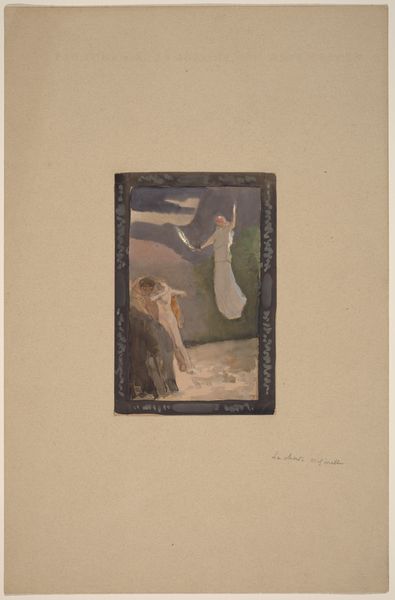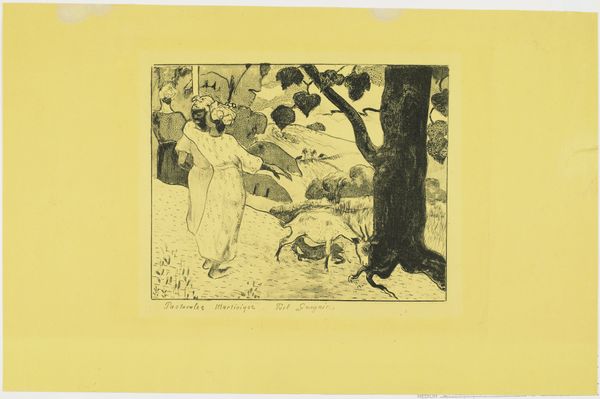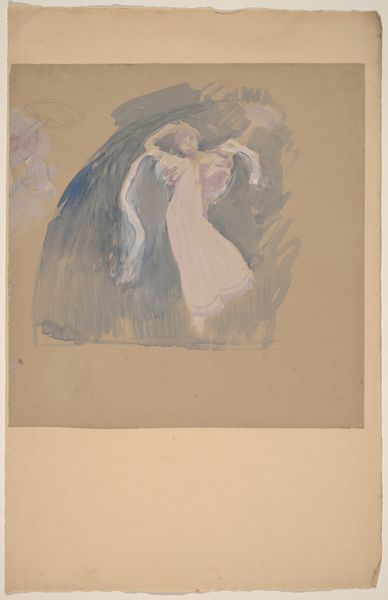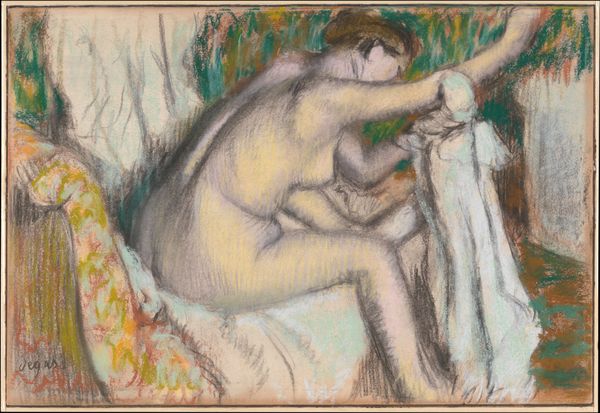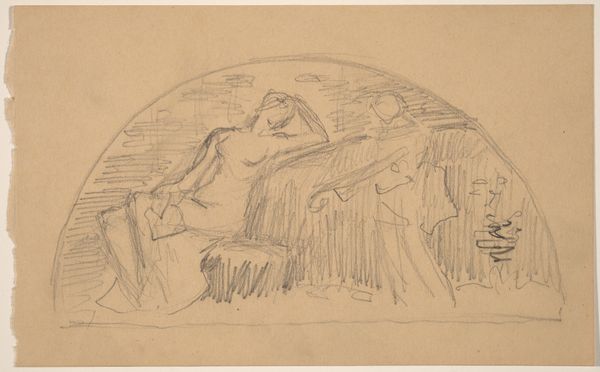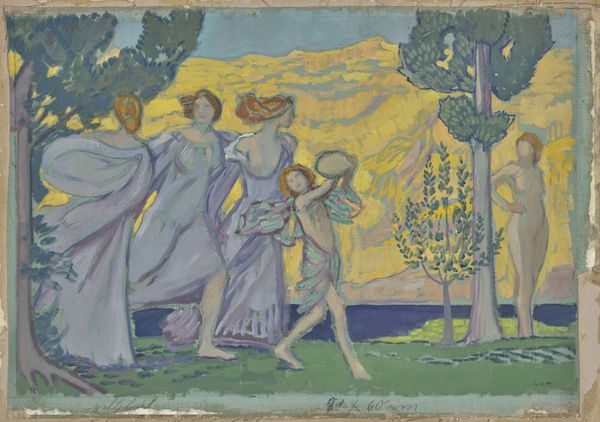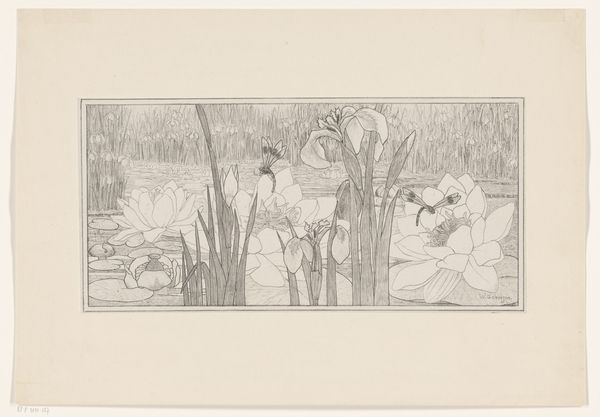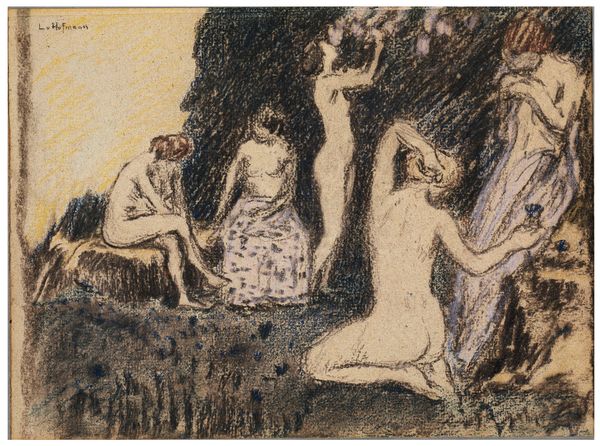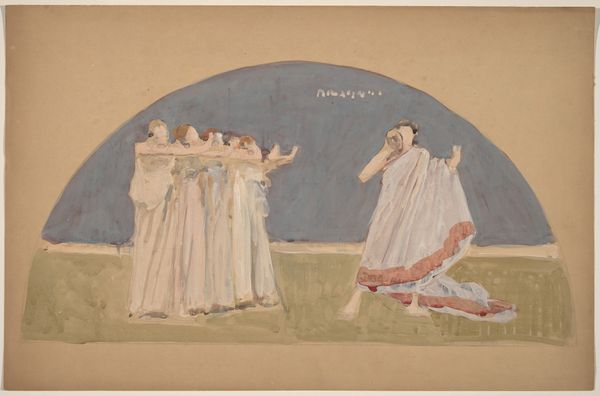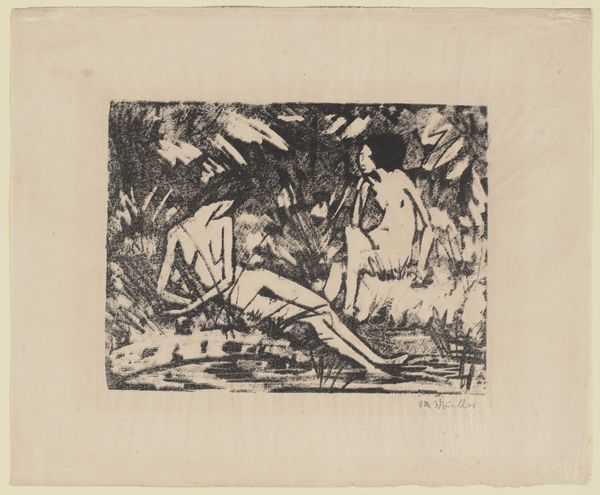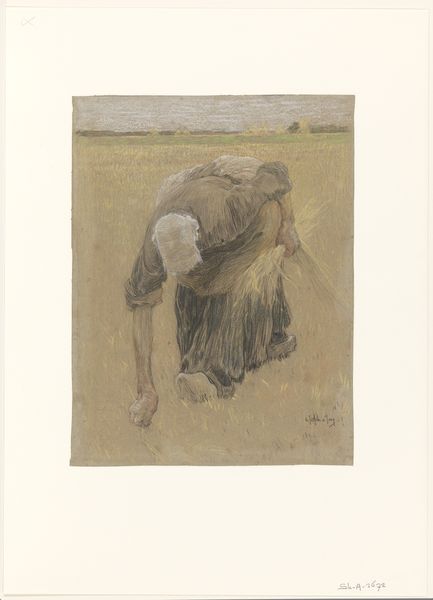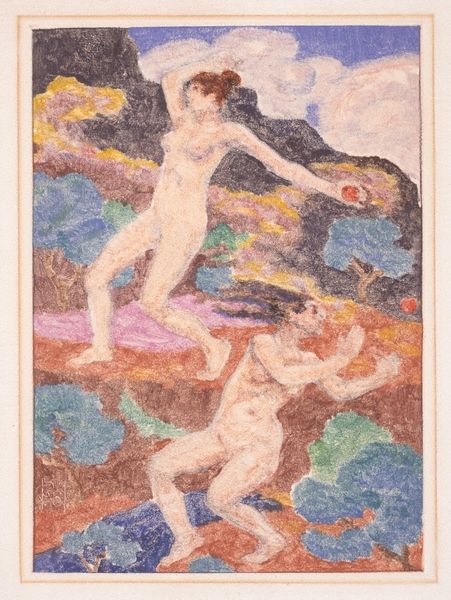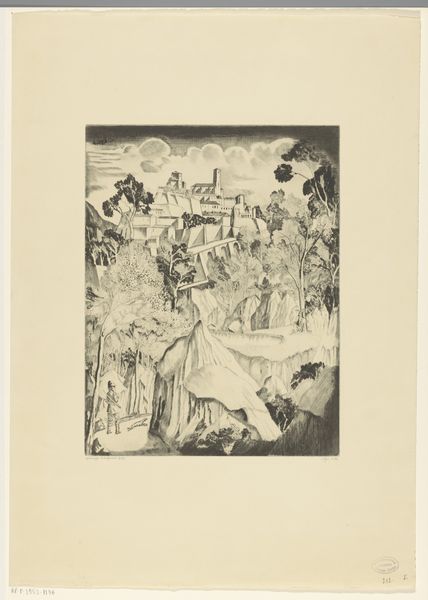
drawing, plein-air, watercolor
#
drawing
#
plein-air
#
landscape
#
figuration
#
watercolor
Dimensions: image (lunette): 15.2 × 28.8 cm (6 × 11 5/16 in.) mount: 30.2 x 46.2 cm (11 7/8 x 18 3/16 in.)
Copyright: National Gallery of Art: CC0 1.0
Curator: This watercolor drawing, "Study for a Lunette," by Charles Sprague Pearce, dating from about 1890 to 1897, strikes me as incredibly tranquil. What do you think? Editor: It evokes a strange sense of detachment, a dreamy space divorced from tangible reality. The figures, these women, are so lightly rendered they feel like echoes or spectres in this pastoral landscape. Curator: Precisely! The semi-circular format immediately reminds me of architectural decoration, specifically lunettes often found above doors or windows, frequently employed for allegorical or mythological scenes. The figures themselves resonate with a sense of classical allegory, though almost devoid of definitive narrative. Editor: Considering the period and the artist, I wonder about the implications of presenting women within a natural, perhaps Edenic setting. There's an ambiguity here; they’re neither overtly sexualized nor completely desexualized. How does this contribute to the late 19th-century construction of female identity? Is there a challenge to Victorian ideals here, even a subtle one? Curator: That’s a sharp observation. We could consider it a challenge to those rigid roles. The watercolor technique lends itself well to this interpretation, softening the edges, blurring the defined societal roles with flowing lines and blended colours. We also must note the deliberate rendering of nature in the en plein air tradition and, consider the freedom implied in escaping the stuffy salons. Editor: And the lack of direct engagement. The seated woman's gaze is averted, inward-focused, perhaps reflective. The other figure extends a hand, but there's a hesitancy, a lack of connection, highlighting the themes of isolation even within a shared landscape. What do we learn when understanding what these works reveal and conceal about female relationships, female autonomy, and the broader landscape of women's social roles at the time? Curator: Ultimately, “Study for a Lunette” offers an interesting commentary on that era, suggesting that the aesthetic movements often become imbued with the very politics of that period. Editor: A fleeting vision, suspended between the real and ideal. A moment to reflect.
Comments
No comments
Be the first to comment and join the conversation on the ultimate creative platform.
